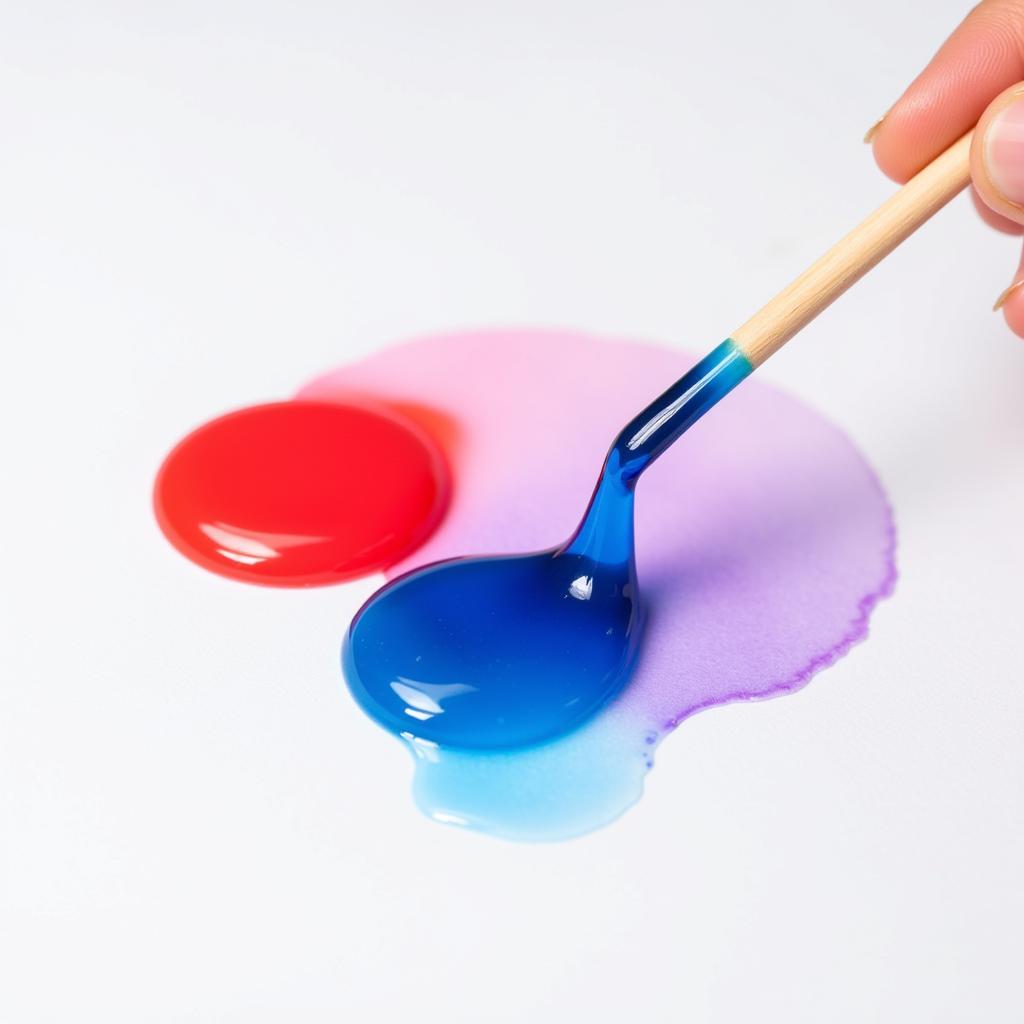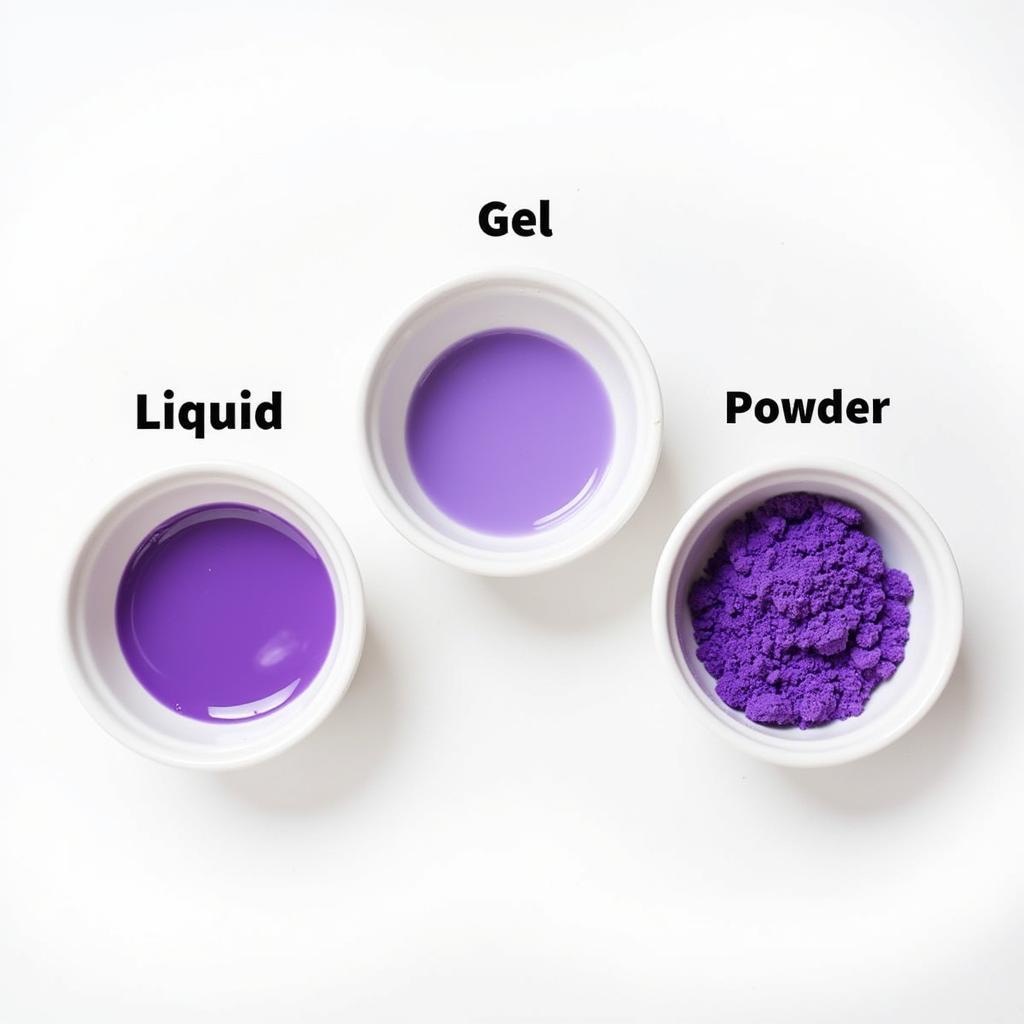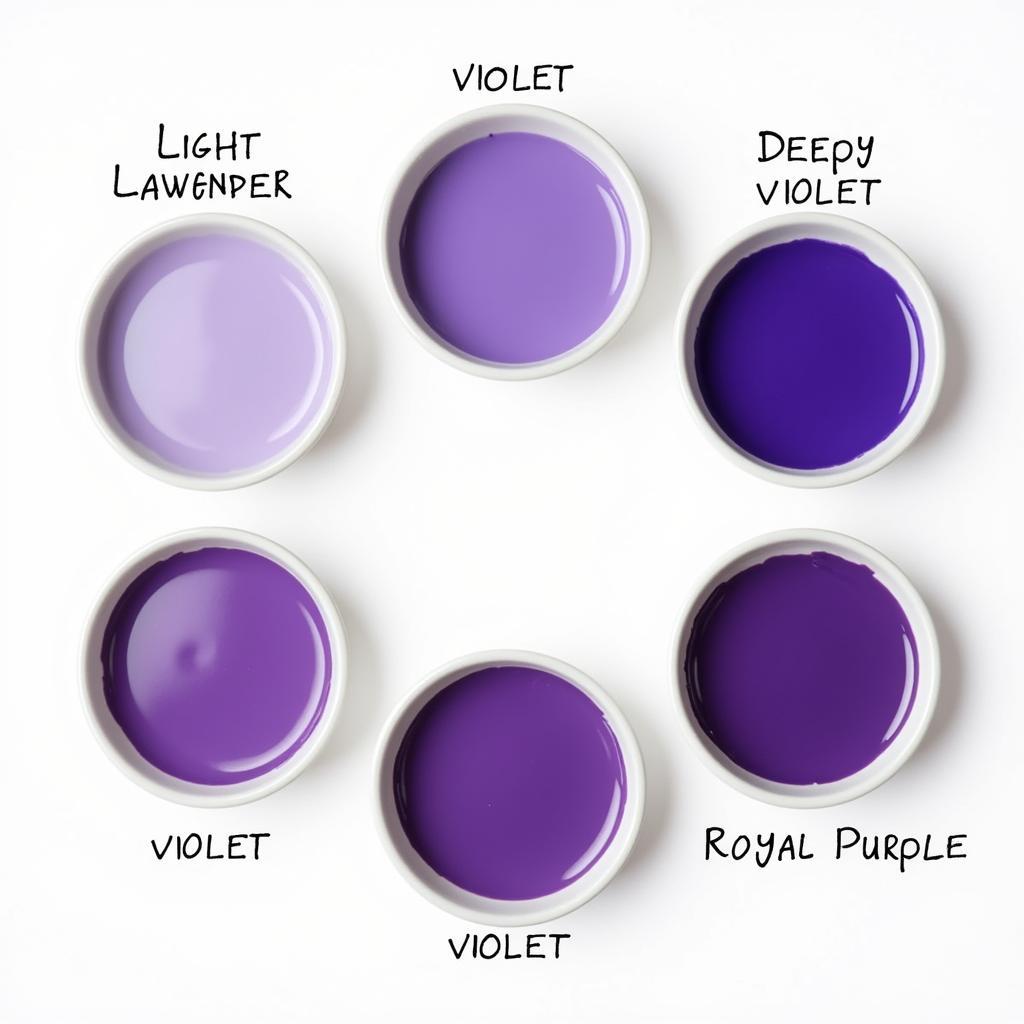Creating the perfect shade of purple with food coloring can seem like a simple task, but achieving vibrant and consistent results requires a bit of knowledge. Whether you’re baking a purple velvet cake, frosting lavender cupcakes, or dyeing Easter eggs, understanding which food colorings make purple is essential. Let’s dive into the world of color mixing and explore the different ways to achieve this regal hue. what two primary colors make purple
Mixing Red and Blue Food Coloring for Purple
The most common and straightforward way to make purple food coloring is by combining red and blue. However, the exact shade of purple you achieve depends on several factors, including the type of food coloring you use (liquid, gel, or powder), the specific brand, and the ratios of red and blue.
- Start with equal parts: A good starting point is to mix equal amounts of red and blue food coloring.
- Adjust for desired shade: If you want a more reddish-purple, add a little more red. For a bluer purple, add more blue.
- Test on a small sample: Before adding the color to your entire batch, test it on a small amount of icing, batter, or whatever medium you’re using. This allows you to fine-tune the color before committing to the whole mixture.
 Mixing Red and Blue Food Coloring to Make Purple
Mixing Red and Blue Food Coloring to Make Purple
Understanding Food Coloring Types
Different types of food coloring have varying levels of concentration and can affect the final purple hue.
- Liquid Food Coloring: This is the most readily available type, but it’s also the least concentrated. You’ll need more liquid food coloring to achieve a vibrant purple, which can sometimes affect the consistency of your mixture.
- Gel Food Coloring: Gel food colorings are more concentrated and offer more intense colors without altering the consistency of your recipe as much. They are a good choice for achieving deep, rich purples.
- Powdered Food Coloring: Similar to gel food coloring, powdered versions offer concentrated color. However, they require pre-mixing with a liquid before adding them to your recipe.
 Different Types of Food Coloring for Making Purple
Different Types of Food Coloring for Making Purple
Achieving Specific Shades of Purple
Beyond the basic red and blue mix, you can create a range of purple hues by incorporating other colors.
How Do I Make Lavender Food Coloring?
For a lighter, pastel purple like lavender, start with a smaller amount of red and blue and then gradually add white food coloring to achieve the desired lightness. You can also add a tiny touch of blue to pre-made pink icing.
What Food Colorings Make Violet?
Violet is a bluer shade of purple. Achieve this by using more blue than red in your mixture. You can also experiment with adding a tiny drop of black to deepen the color and create a more complex shade. how do you make the color brown with food coloring
How Can I Make a Deep Royal Purple?
A rich, royal purple can be achieved by using a combination of red, blue, and a small amount of black food coloring. Start with a base of red and blue and carefully add tiny amounts of black until you reach the desired depth. can you use gel food coloring in slime
 Achieving Various Shades of Purple with Food Coloring
Achieving Various Shades of Purple with Food Coloring
Tips for Successful Color Mixing
- Use high-quality food coloring: The quality of your food coloring can significantly impact the final result. Investing in good quality food coloring will make achieving vibrant, accurate colors easier.
- Mix thoroughly: Make sure to mix your colors completely to avoid streaks or uneven coloration.
- Keep records: If you create a particularly beautiful shade of purple, write down the exact ratios you used so you can easily recreate it later.
“Achieving the perfect purple is all about experimentation and understanding the interplay of colors. Don’t be afraid to play around and discover your own unique shades,” advises renowned pastry chef and color expert, Amelia Dubois. “Remember, even a tiny adjustment can significantly impact the final outcome.”
In conclusion, making purple food coloring is a simple yet rewarding process that allows for creativity and customization. By understanding the basic principles of color mixing and using high-quality ingredients, you can create a wide spectrum of purple hues to perfectly complement your culinary creations. Whether you’re aiming for a delicate lavender or a rich royal purple, the key is to experiment and find what food coloring makes purple work best for you.
FAQ
- Can I use natural food colorings to make purple?
- What happens if I use too much blue when making purple?
- Can I mix different brands of food coloring?
- How do I fix purple food coloring that is too dark?
- How do I make a neon purple food coloring?
- Can I use food coloring markers to color icing purple?
- What are some common uses for purple food coloring?
For further support please contact Phone: 0373298888, Email: [email protected] Or visit us at: 86 Cau Giay, Hanoi. We have a 24/7 customer support team. Also see our articles on how to make maroon icing with food coloring and what color is blue and purple.